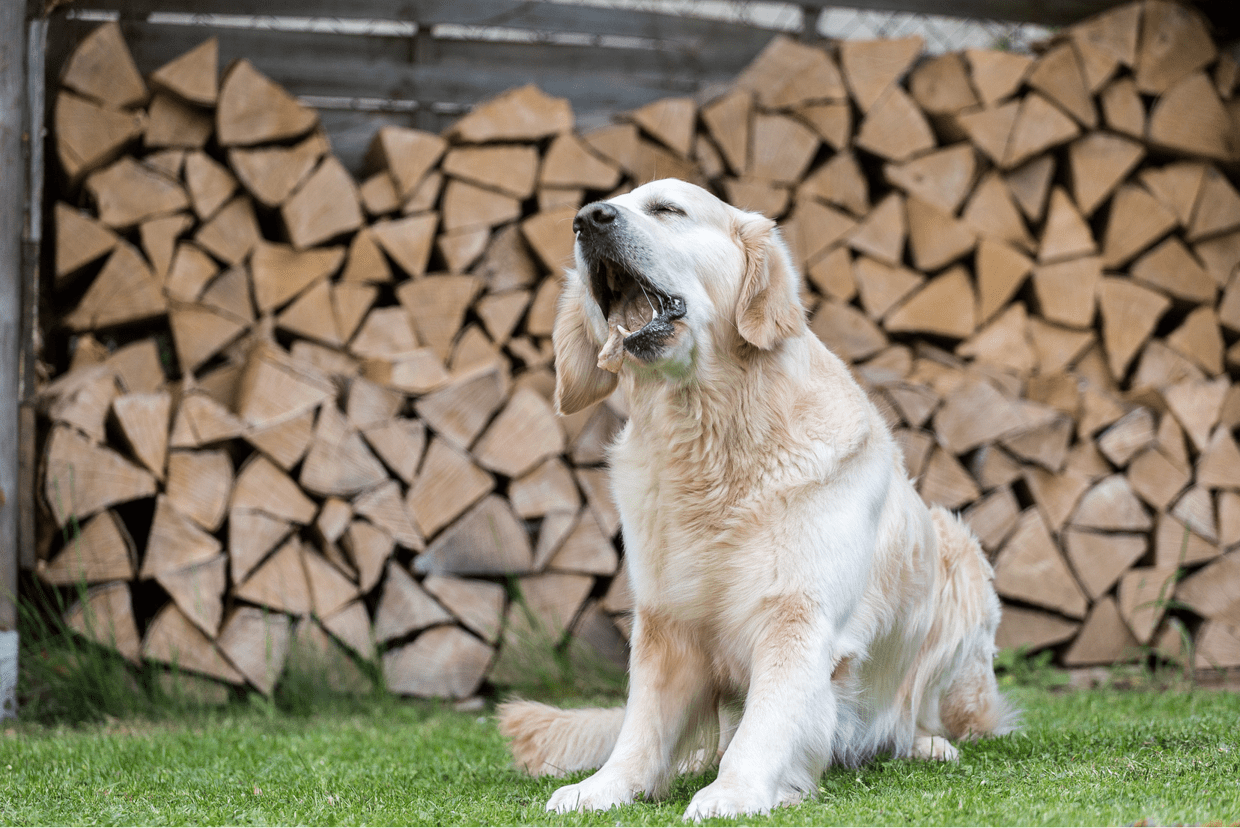‘Dog vomiting might worry pet owners, but it’s essential to understand the underlying causes and when it might be an emergency. Here, we’ll look at the causes of dog vomiting, what to do in different circumstances, first aid techniques, and suitable foods to give your dog when throwing up.’
Common Reasons for Dog Vomiting
- Dietary Upset: Dogs may vomit due to dietary indiscretion, such as eating spoiled food, garbage, or something unusual.
- Motion Sickness: Just like humans, some dogs can experience motion sickness during car rides or other forms of travel.
- Gastritis: Inflammation of the stomach lining can lead to vomiting, often caused by infections, toxins, or medications.
- Infections: Various infections, including parvovirus and bacterial infections, can trigger vomiting.
- Foreign Objects: If a dog ingests something non-digestible, like toys or clothing, it may vomit to expel the foreign object.
- Food Allergies or Intolerances: Certain foods can trigger allergic reactions or digestive issues, leading to vomiting.
- Underlying Health Issues: More severe conditions such as kidney disease, pancreatitis, or liver problems can also result in vomiting.
When Is It an Emergency? What Can You Do at Home?
Emergency Situations
If your dog exhibits any of the following symptoms along with vomiting, seek immediate veterinary care:
- Repeated vomiting or violent vomiting
- Blood in vomit
- Lethargy or weakness
- Abdominal pain or distension
- Seizures
- Inability to keep water down
- Signs of dehydration (dry gums, excessive thirst, sunken eyes)
Home Care for Mild Cases
For mild cases of vomiting without any alarming symptoms, you can try these steps:
- Withhold Food: Allow your dog’s stomach to rest for 12-24 hours by withholding food. Give them water after small intervals. Chances of dehydration are high because of vomiting.
- Gradual Reintroduction: After fasting, reintroduce bland, easily digestible food in small portions. Cooked white rice and boiled chicken or a specialized prescription diet recommended by your vet can be good options.
- Small, Frequent Meals: Instead of large meals, feed your dog smaller, more frequent portions throughout the day.
- Monitor: Monitor your dog for any changes in behavior, appetite, or vomiting frequency. Gradually transition back to their regular diet if vomiting stops.
First Aid When the Dog Vomits
If your dog starts vomiting, you can offer some immediate first aid:
- Check for Objects: Ensure no visible foreign objects are lodged in your dog’s mouth or throat. Be cautious when checking to avoid being bitten.
- Remove Food and Water: Temporarily remove access to food and water to settle the stomach. Reintroduce water after a few hours if vomiting stops.
- Observe Behavior: Monitor your dog’s behavior, looking for signs of distress or pain. If they appear uncomfortable or continue vomiting, contact your veterinarian.
- Prevent Dehydration: Offer small ice cubes for your dog to lick or provide an ice cube tray with diluted chicken or beef broth to maintain hydration.
Remember that consulting your veterinarian is crucial if vomiting persists or is accompanied by concerning symptoms. They can perform necessary tests to diagnose the underlying cause and recommend appropriate treatment. In severe cases, prompt veterinary intervention can be life-saving.
Final Verdict
Ultimately, the key to managing dog vomiting is understanding the underlying cause and taking appropriate action based on the severity of the situation. Always prioritize your pet’s well-being and consult a veterinarian for professional guidance.



